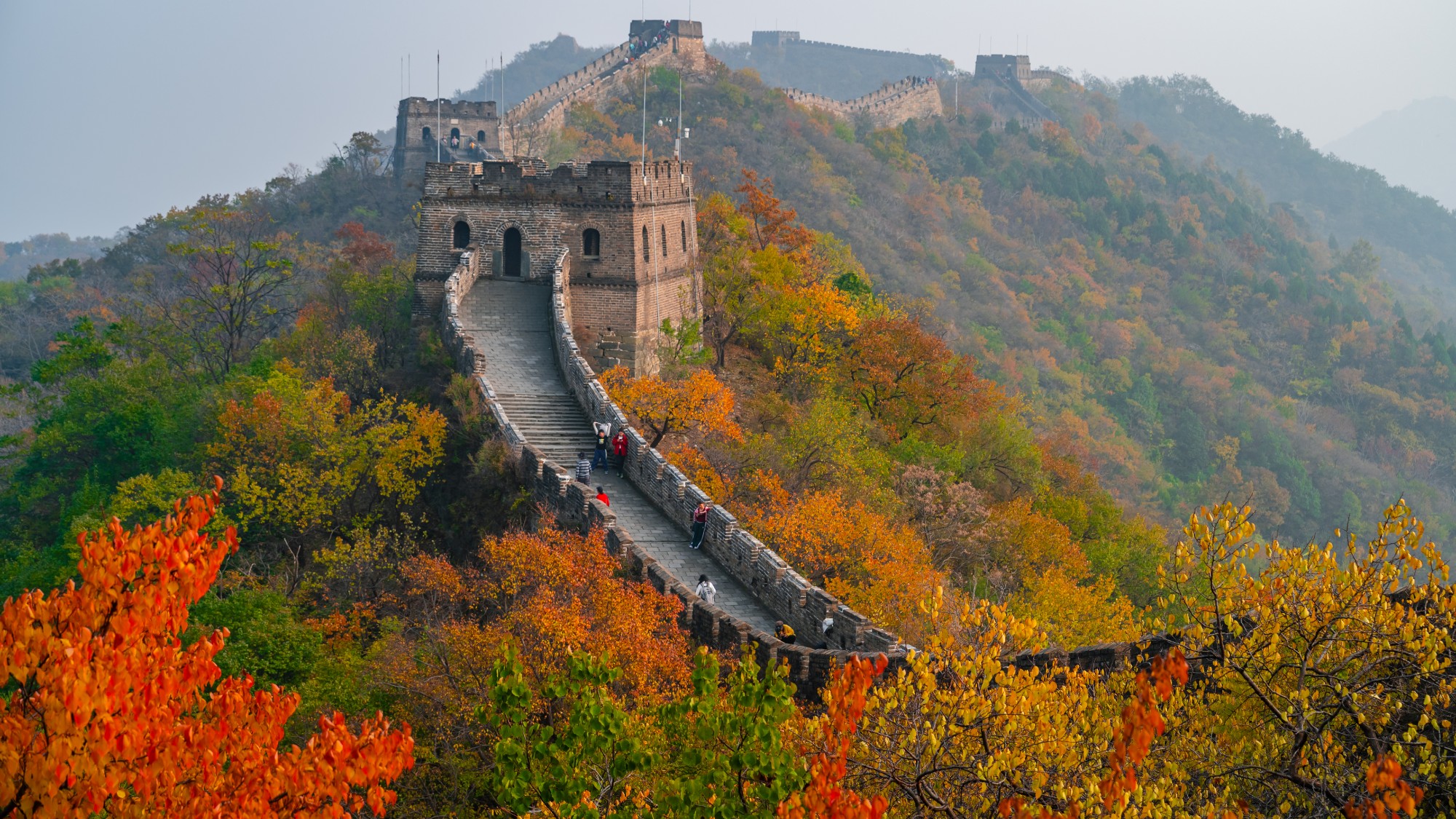A guide to the Great Wall of China
Experience this architectural feat


The Great Wall of China continues to fascinate the world, thousands of years after construction on the massive bulwark first began. This architectural wonder is a historic reminder of what humanity can build and what years of erosion and the elements can take away. Here's what you need to know before embarking on your visit.
Why was it built?
The Great Wall of China stretches across an astonishing 13,170 miles and spans 15 provinces. It's actually a series of walls made of stone, wood, bricks and earth built during different eras to protect against invasions and raids, running from Shanghai Pass westward to Jiayuguan. Now, it serves as an "architectural record" of the "ebb and flow" of conflict between the Chinese and "fierce nomadic tribes beyond the wall," like the Huns and Mongols, said Lonely Planet.
Can you see all of the original wall?
Many parts of the wall are crumbling, have already collapsed or are otherwise inaccessible, but there are still several segments standing. Travelers typically head to four main sections, with Badaling, 43 miles from downtown Beijing, being the "most accessible for travelers of varying mobility," said Travel and Leisure. This is the best-preserved stretch of the wall, with handrails and stairs that are not as steep. Of the other three sections, Mutianyu is "extremely popular and well-restored," while Jinshanling is perfect for "serious hikers" and Simatai offers a "rugged" experience.
The Week
Escape your echo chamber. Get the facts behind the news, plus analysis from multiple perspectives.

Sign up for The Week's Free Newsletters
From our morning news briefing to a weekly Good News Newsletter, get the best of The Week delivered directly to your inbox.
From our morning news briefing to a weekly Good News Newsletter, get the best of The Week delivered directly to your inbox.
The oldest stretch of the wall is Qi in Shandong Province, and recent research has found it dates back "300 years earlier than the previous record-holding section," said Popular Mechanics. Carbon dating and optically stimulated luminescence revealed that the start of construction was during the Zhou Dynasty's Spring and Autumn period (1046-256 B.C.) and Warring States Period (475-221 B.C.).
Visitors to these walls can walk and hike or, if at Mutianyu, "slide down the side of the mountain on a toboggan," said Afar. Should the trek get too difficult at Mutianyu or Badaling, there are "cable cars to help with steep climbs," said Lonely Planet.
Do you need to book a tour to visit?
No, but tours are recommended for first-timers. Travelers can choose between day trips, multiday hikes and even tours that offer camping for a "chance to catch the sunrise," said Lonely Planet. Visitors looking for a more cultural experience can hire a local guide to also show them nearby villages. This is especially intriguing in Inner Mongolia and Gansu province, where you can "see their preserved ancient traditions in practice."
When is the best time to go?
For the best weather, visit during the fall, when the temperatures are comfortable and the foliage is a "kaleidoscopic array of hues," said Travel and Leisure. Those willing to deal with bone-chilling cold and slippery paths can avoid crowds by going to the wall in the winter.
A free daily email with the biggest news stories of the day – and the best features from TheWeek.com
The busiest times to visit are during early May, October and major holidays, as the wall is also popular with domestic tourists. To steer clear of the hordes, consider arriving at the wall later in the day, when morning and early afternoon visitors start leaving.
Catherine Garcia has worked as a senior writer at The Week since 2014. Her writing and reporting have appeared in Entertainment Weekly, The New York Times, Wirecutter, NBC News and "The Book of Jezebel," among others. She's a graduate of the University of Redlands and the Columbia University Graduate School of Journalism.
-
 The history of US nuclear weapons on UK soil
The history of US nuclear weapons on UK soilThe Explainer Arrangement has led to protests and dangerous mishaps
-
 Tea with Judi Dench: ‘touching’ show is must-watch Christmas TV
Tea with Judi Dench: ‘touching’ show is must-watch Christmas TVThe Week Recommends The national treasure sits down with Kenneth Branagh at her country home for a heartwarming ‘natter’
-
 Codeword: December 24, 2025
Codeword: December 24, 2025The daily codeword puzzle from The Week
-
 Let these comedians help you laugh your way through winter
Let these comedians help you laugh your way through winterThe Week Recommends Get some laughs from Nate Bargatze, Josh Johnson and more
-
 The 8 best drama movies of 2025
The 8 best drama movies of 2025the week recommends Nuclear war, dictatorship and the summer of 2020 highlight the most important and memorable films of 2025
-
 The best books of 2025
The best books of 2025The Week Recommends A deep dive into the site of a mass shooting, a new release from the author of ‘Atonement’ and more
-
 The best music of 2025
The best music of 2025The Week Recommends These were some of the finest releases of the past year
-
 The 8 best comedy series of 2025
The 8 best comedy series of 2025the week recommends From quarterlife crises to Hollywood satires, these were the funniest shows of 2025
-
 8 touring theater productions to see this winter, all across the United States
8 touring theater productions to see this winter, all across the United Statesthe week recommends New shows and reconsidered productions are on the move
-
 10 upcoming albums to stream during the winter chill
10 upcoming albums to stream during the winter chillThe Week Recommends As the calendar turns to 2026, check out some new music from your favorite artists
-
 One great cookbook: Natasha Pickowicz’s ‘More Than Cake’
One great cookbook: Natasha Pickowicz’s ‘More Than Cake’the week recommends The power of pastry brought to inspired life
